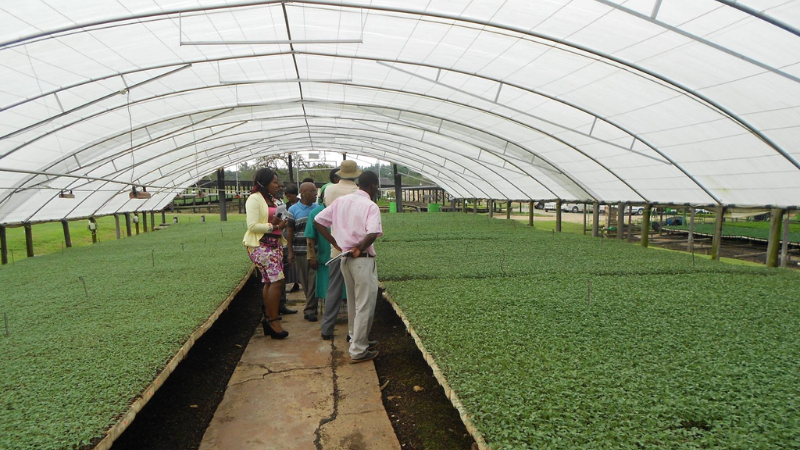by Mr. Sengeto Dlamini from Eswatini National Agricultural Union
Description
Climate change has disrupted the planting calendar for most crops in the country due to weather patterns. Farmers now find it challenging to prepare schedules for their planting activities. Due to this change, some farmers have significantly lost on investments made on farming; for example, bean production in the country has been deficient since the 2018/2019 growing season to unpredictable rainfall patterns and excessive rains when the crop is at flowering stage. Many farmers have made massive losses due to hail storms, cyclones, drought, and frost. A lot of Livestock valued at over SZL 4 million died due to the El Niño drought that hit the region in 2016.
The Eswatini National Agricultural Union organizes and facilitates training on commodity production. Good Agricultural Practices (GAP) have been promoted as part of this training to farmers, including Conservation Agriculture; Mixed Farming; Agro-forestry; Tunnel farming; Inter-cropping. Farmers are trained on how to reduce post-harvest losses to make sure that farming enterprises get maximum returns and that farming households get adequate food. The adoption of Conservation Agriculture (CA) technology to minimize the effects of climate change has been promoted as well. Conservation Agriculture is a method of farming that aims to keep the land in its natural state as long as possible. Farmers have been encouraged to keep the three basic principles of CA, namely observing minimum tillage, soil cover, and multiple-cropping. It has played a significant role in bringing back hope for farmers amid these climate changes. Farmers have also been trained about the use of technologies to beat climate change, including tunnels (especially in vegetable production). Farming tunnels have been seen as the breakthrough for vegetables in dealing with climate change. They protect the produce from adverse weather conditions and prolong the farming season, increasing productivity. Livestock producers are encouraged to control the stocking rate to improve grazing land management and reduce soil erosion due to over-stocking or over-grazing.
Results
Engaging in CA principles ensures a sustainable environment for production because the land is used conservatively to allow for long-term production. Even the production costs in CA are lower than in conventional agriculture because fewer chemicals are used. This adds to the ability of the farmer to become more sustainable in terms of production, and it ensures healthier produce than in conventional agriculture. The principle of multiple-cropping in CA allows a balanced diet for households through inter-cropping and crop rotation. Farming tunnels create and prolong suitable production seasons; this allows more production and more income to the farmer. With more income, the farmer can create a sustainable enterprise for themselves and a consistent supply throughout the value chain.
Climate smartness*
As well described in the results section, this story highlights the direct positive effects on food and nutritional security for the country’s population. In the same vein, the benefits in the adaptation capacity/resilience of farmers and the agroecosystem are diverse. For example, CA practices, farming tunnels and stoking rate management are in favour of the continuous enhancement of the physical-chemical and biological characteristics of the soil, as well as of the efficient use of available water. In terms of mitigation, soil conservation actions turn out to maintain one of the most important terrestrial carbon sinks both in organic and mineral matter. Nevertheless, in order to materialize these benefits, it is still important to strengthen and scale out the initiatives that the farmers’ unions facilitate through sharing knowledge and experiences in sustainable farm management, generating training spaces and methodologies in order to maximize their socio-economic and environmental benefits.
*This is done in the framework of climate-smart agriculture (CSA) approach. Climate-smartness in agriculture means understanding impacts of climate change and variability along with the agricultural activity, which includes the planning of what crop to plant, when to plant, what variety to plant and what type of management practices are needed to reduce the impact on the environment (e.g. emissions reduction), maintain or increase productivity (e.g. yields) while increasing resilience and improving livelihoods.


